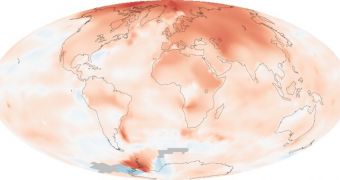The climate “tipping point” is a concept used by scientists to denote a certain moment in time when the extent of the damage we are inflicting on the environment will become so severe that no mitigation actions will ever manage to revert the harm. According to a new investigation, conducted by researchers at the University of California in Davis (UCD), this moment will occur without any prior warning, much to the despair of scientists who want to determine when it will happen, so that they can inform policymakers, and demand more urgent action. The work was conducted by UCSD theoretical ecologist, and top ecological forecaster Alan Hastings.
“Many scientists are looking for the warning signs that herald sudden changes in natural systems, in hopes of forestalling those changes, or improving our preparations for them. Our new study found, unfortunately, that regime shifts with potentially large consequences can happen without warning – systems can 'tip' precipitously. This means that some effects of global climate change on ecosystems can be seen only once the effects are dramatic. By that point returning the system to a desirable state will be difficult, if not impossible,” the scientist says.
The investigation could in the near future be used for other applications as well, in the sense that, although it focuses on models from ecology, it could also be of use to researchers analyzing other complex systems. According to scientists, some of these systems may include the effects of human dynamics on nature (such as excessive fishing), as well the situation and future of financial markets. The new research basically consisted of creating a mathematical model to predict the climate tipping point. Hastings is renowned around the globe for using such models in understanding changes in nature.
“Climate scientists worry about 'tipping points' […] thresholds beyond which a small additional increase in average temperature or some associated climate variable results in major changes to the affected system,” told a congressional committee US presidential science adviser John Holdren, who was not a part of the new study. Reaching the nefarious moment could have “symptoms” such as the disappearance of the Arctic ices in the summer, modified oceanic and atmospheric circulation patterns across the Northern Hemisphere, sea level rise, and melting ice shelves in Greenland and Antarctica.
This work was conducted with funding secured under the US National Science Foundation's (NSF) Advancing Theory in Biology program. A paper accompanying the findings, called “Regime shifts in ecological systems can occur with no warning,” was published in the February 9 online issue of the respected scientific journal Ecology Letters.

 14 DAY TRIAL //
14 DAY TRIAL //